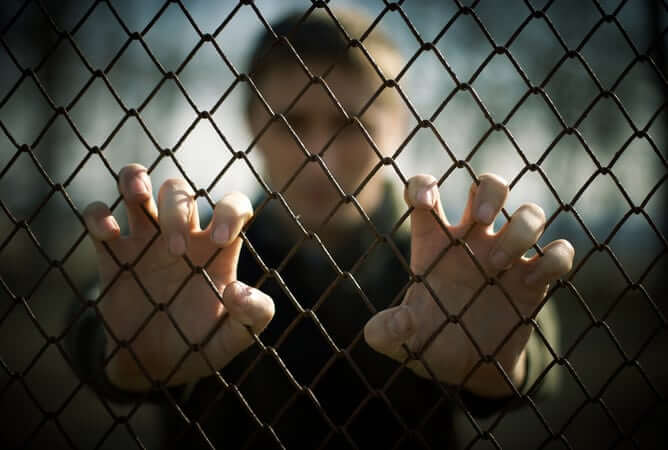This article is written by Pranjal Singh & VAIBHAV SANGAM MISHRA from Babu Banarasi Das University, Lucknow and the article has been edited by Khushi Sharma (Trainee Associate, Blog iPleaders).
Introduction
The Juvenile Justice (Care and Protection of Children) Amendment Bill, 2021, which looks to alter the Juvenile Justice Act, 2015, was passed in the Lok Sabha on March 15th, 2021 with the proposed enactment being firmly valued by both the decision party just as resistance individuals which were presented by the Minister of Women and Child Development, Ms. Smirti Zubin Irani. Later on, the Rajya Sabha clears the changes to the Child Protection Law on July 28th, 2021.
The amendment looks to reinforce the protection of children— including the ones who require assurance under the law just as the individuals who struggle with the law. The Act expressed that the adoption of a child is last on the issuance of an adoption request by the common court. The Bill gives that rather than the court, the area judge, including extra locale officer, will issue such adoption orders. This bill has centered upon streams like child adoption and intolerable offenses submitted by minors. The Act, 2015 comprises arrangements identified with the children in struggle with the law and needing care and protection. The new amendment bill tries to present measures for fortifying the children’s protection arrangement. This Act was passed with the view to eliminate the troubles in translation of the past Juvenile Justice Act.
What is the Juvenile Justice (Care and Protection of Children) Act, 2015
Before we move further, we are required to comprehend the history of the Juvenile justice act 2015, a new statutory act entitled as Juvenile justice care and protection of children act, 2000 which was passed and came into force on 1st April 2001 and replaced the previous one (conspicuously Juvenile justice act 1986). Thereafter another amendment act, the Juvenile justice act, 2015 has replaced the J.J act of 2000. The J.J act (care and protection of children) act, 2015 was enacted by the parliament of India on 7 May 2015 in Lok Sabha and 22 December 2015 in the Rajya Sabha. President of India assented on 31st December 2015.
The 2015 J.J act has specified and define so many new branches, board and distribute justice and power to the competent authority to justice must be served under the constitution supervision. J.J. act requires members of the Juvenile Committee and Child Welfare Committee to receive initial training within two months of their appointment which is specified (under section 4 & 27) children’s court, under section 15 after the recipient of preliminary assessment from the board then children’s court may decide those under the prescribed provision (section 19). One of the significant/ part sections of the Juvenile justice act 2015 that is, no child in conflict with the law shall be sentenced to capital punishment or life incarceration without the endeavours of the release of any such offense either aforesaid act or under the IPC provision (section 21). The present act also elaborates about child welfare committee, it empowered the State Government that through a notification in the official gazette to constitute one or more child welfare committees in every district for exercising the power and to discharge the duties conferred on such committee concerning children welfare, security so on and so forth in this act (section 27-chapter v of J.J ACT 2015). The present act 2015 has changed the Nomenclature from “Juvenile” to “child or “child in conflict with law”. The word Juvenile or child means a person either a boy or girl who has not completed the 18th year of age. Although, in the earliest Juvenile justice act 1986 this age was 16 years for boys and 18 years for girls. The aforesaid concept defines in chapter 5 of the act and procedure concerning children in conflict with law simultaneously.
A stupendous hallmark of the Juvenile Justice (care and protection of children) act 2015 is “community/ social service as an alternative to primitive means of incarceration or fine” specified under section 4 of the Juvenile justice act, 2015. In the present act, there is numerous anastomosis of the new definition concerning orphaned, abandoned, and surrendered children and also differentiate between normal crime and grave in nature offences like the petty, grave, and heinous offence ( more serious as compared with the petty offence)is committed by juvenile; the special provision also substituted in the act which is a special provision for heinous offences committed by children/ Juvenile aloft the age of XVI years under section 12 of the J.J act 2015( those who committed heinous offence like rape, murder, dacoity (Section 395), etc whether they are under the age of Xviii they can not avail juvenile justice act protection), special provision has been inserted to preclude child offender from committing a very heinous offence in the age group of XVI to XVIII years.
The Juvenile Justice Council offers the possibility of referring the corresponding cases of heinous offences committed by these minors to the juvenile court (session court) only after having carried out preliminary assessments. Even in the present act, separate new chapter over adoption to streamline adoption of orphan abandoned and surrendered children anastomosis. Also, CARA – Central Adoption Resource Authority has conferred the status of statutory corpus to enable it to perform its process, function, and procedure more efficiently. The present act, the provision related to aforesaid is detailed described in the separate chapter (VIII). Under the provisions of the 2015 law, a single or divorced person/citizen can also adopt a child, although a single man cannot adopt a girl child. The present act is potentially being modified by the parliament of India to protect Juvenile against cruelty Although for the time being not a single statutory act have so for adequate law to protect juvenile against cruelty under the present act, so many protective measures have been included. The provision regarding registration of child care institutions made it mandatory to register in the present act, even if these agencies are government agencies or non-government agencies, or all or part of them, regardless of whether they receive government subsidies or not, they must be registered under the Juvenile Justice Act 2015 within six months from the effective date of the statutory.
Why amendment in Juvenile Justice Act 2015 was needed?
The Delhi gang-rape case ( Mukesh v. State (NCT of Delhi) brought numerous changes in the Indian criminal justice system. In the case of Nirbhaya a juvenile also Indulge in the same transaction, he was the same abomination to commit the offence although due to juvenile procedure he was being released, thereafter, throughout the Nation on agitation against his release and questioning to law enforcement, therefore Rajya Sabha has passed the Juvenile Justice Bill 2014, this Act indeed makes the real balance between equality before the law and the equal protection of the laws. However, I’ve covered almost all amendments that took place in the 2015 Act in the above title.
The following main amendments was made :
- The juvenile justice act has divided the world crime into 3 diverse genera (1) petty office (2) serious offence (3) Heinous offence.
- For the age of 16 in the case of heinous crime offender treated as an adult, not J.J. protection shall be granted in the aforesaid case.
- If any person compelling/ giving juvenile to swallow liquor or any intoxication liquor or drug, the punishment up to 7 years and penalty up to one lakh rupee, etc.
The Juvenile Justice Amendment Bill, 2021
Adolescent wrongdoing is certainly not another thing in India. The crime percentages are not reducing and causing a big deal of concern. As per a report introduced by the National Crime Reports Bureau (NCRB) in 2019, the adolescent crime percentages spikes higher when contrasted with earlier years individually. It was additionally uncovered by the reports of NCRB that the Child Care Institutions not working as expected even after the 2015 Amendment was brought to the Act. The deficient and absence of Juvenile guidelines by the bodies.
The National Commission for Protection of Child Rights (NCPCR) examined the Child Care Institutions (CCIs), in 2020 and uncovered that 90% of which are controlled by NGO’s and tracked down that the Child Care Institutions (CCIs) were not enlisted even after the 2015 Amendment was brought to the Act. The information recommended that these home considerations needed getting assets rather than recovery of youngsters. In this way, the bill was acquainted with a view with executing estimates that will fortify the child protection forums.
The Juvenile Justice Amendment Bill was passed by Rajya Sabha on 28th July 2021. It was earned help in March which was upheld and postponed by the Ministry of Women and Child Development Ms. Smirti Zubin Irani and collected a great deal of help as well as by the opposition parties. The Bill changes the Juvenile Justice (Care and Protection of Children) Act, 2015. The Act, 2015 comprises arrangements identified with children in struggle with the law and needing care and protection. The Bill tries to present measures for reinforcing the child protection arrangement.
The changes introduced by the New Amendment Bill are as follows:
- Serious offences: one of the significant amendments got the incorporation of the classification of serious offences or serious wrongdoings. Which is ordered now into two classifications of wrongdoing; named Heinous Offenses and Serious Offenses.
Heinous Offences: Heinous Offences are those wrongdoings that recommend the least discipline of seven years or more under Section 2(33) of the Indian Panel Code. For the most part, Heinous Crimes include some type of exceptional individual injury or death; e.g., Murder, assault, sexual molestation, and so on.
Serious Offences: Serious offences incorporate offences for which least detainment of three years and not surpassing seven years are endorsed under Section 2(54) of the Indian Penal Code. This eliminates the uncertainty and has been brought to guarantee the Juvenile’ greatest assurance to get them far from the adult justice system. Presently the Juvenile Justice Board will ask as indicated by the offences submitted by the Juvenile to decide if the Juvenile be attempted as a minor or a grown-up.
- Adoption: The adoption orders usually issued by the courts establish the child belongs to the adoptive parents but now after the amendment in the Juvenile Justice Act 2021, the District Magistrates and the Dumpty District Magistrates have the power to sanction the adoption mechanism.
- Appeal: If a party is aggrieved by the adoption order, the party can go to the divisional official to have to take a passage at that section to settle the complaints however the allure ought to be made under 30 days after the District Magistrate and Additional District Magistrate passed the request. These offers ought to be discarded inside about a month of recording, which helps in speeding the ADOPTION instrument.
- Designated courts: Assigned courts are the exceptional court uniquely set up for the reason to attempt every one of the offences submitted by the Juveniles and named as Children’s Court. Prior before the Amendment was acquainted with the Act the offences thinking about the detainment of seven years and more to be attempted under the Children’s Court and the offences which are punishable of detainment of fewer than seven years will be attempted by the Judicial Magistrates. The bill corrects this to give that all offences under the demonstration will be attempted under the Children’s Court.
- Child Welfare Committee (CWCs): The Bill referenced that no individual will be designated as an individual from CWC except if they have been effectively engaged with any record of human rights or child rights has been indicted for an offense including moral turpitude has been eliminated or excused from administrations of the focal government or any state government or any administration undertaking and if a part of the administration of a child care institution in a locale.
- Termination of members: The appointment of any individual from the board of trustees will be ended by the state government after a request if they neglect to go to the procedures of the Child Welfare Committees, therefore for three months with no substantial reasons or then again on the off chance that they neglect to go to under three fourth of the seating in a year. The bill additionally puts direct management on the responsibility of CCIs as it has been found in surveys that rehabilitation of children isn’t their need and children are kept there just to get the assets which further prompts defilement.
Additional functions of the District Magistrates
DMs are now engaged to survey issues identified with child protection. After the Bill becomes law, their extension will go past the survey. What’s more, when they are lawfully appointed, they would focus on child rights and insurance region, work for Juvenile Justice Board, Child Protection Units, and working for the State Child Government Assistance Board.
Future impact of the new amendment brought to the juvenile law
With the new bill presented by the public authority, it puts more responsibility on bureaucrats. The disappointment in the execution of the Juvenile laws by the Child Care Protection units prompts a flood in crime percentages by the adolescents, the extensive procedure of adoption mechanism, and so on to determine the vagueness by the framework. The new bill arranged segregated offences to protect the children from the adult justice framework appropriately. It likewise gives more powers to the District Magistrates even though they are now saddled with loads of responsibilities. The DM’s need to screen and work for the Juvenile Justice Board, for Child Care Institutions (CCIs), and the District Juvenile Care Boards. As I would like to think, the new bill ought to have been considered to yield the ideal outcomes. Furthermore, make it beneficial for the insurance and care of the child.
Conclusion
The new bill is by all accounts progressive, the key changes brought to the Juvenile Laws reinforce the insurance and care of children including to ones who require assurance under the laws and to the individuals who struggle with the laws. It likewise streamlines the adoption system of the Juvenile to the gatherings. It seems like the encouraging bill brings straightforwardness to the well-being of the children. The new change is invited by the opposition parties too in the parliament which shows the significance of the genuinely necessary advance brought to the laws. It likewise appoints excellent capacity to the District Magistrate to screen the Juvenile Justice framework to eliminate any vagueness to its system and to convey better interest to the government assistance of Juvenile.
LawSikho has created a telegram group for exchanging legal knowledge, referrals, and various opportunities. You can click on this link and join:
https://t.me/joinchat/J_0YrBa4IBSHdpuTfQO_sA
Follow us on Instagram and subscribe to our YouTube channel for more amazing legal content.
 Serato DJ Crack 2025Serato DJ PRO Crack
Serato DJ Crack 2025Serato DJ PRO Crack











 Allow notifications
Allow notifications



